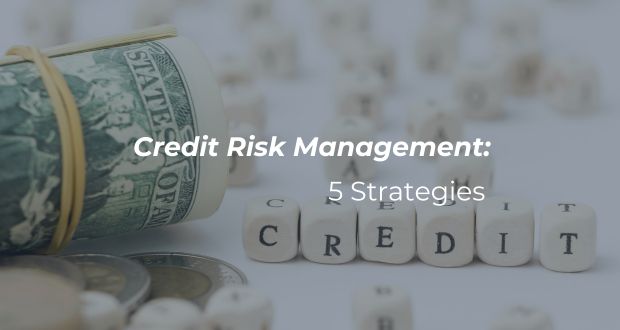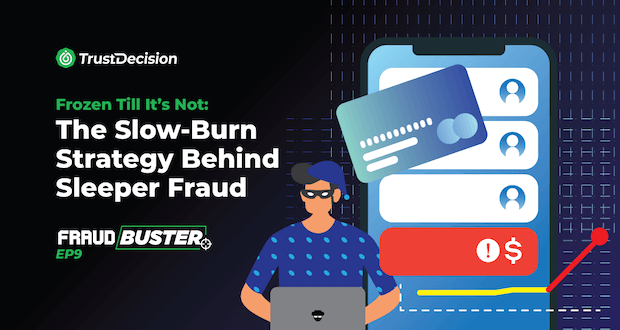Understanding Credit Risk
What Is Credit Risk?
Credit risk refers to the likelihood that a borrower or counterparty will fail to meet their financial obligations, resulting in potential losses for the lender or investor. It affects both financial institutions (such as banks) and non-financial businesses. Here are some key points to consider:
- Default Risk: This is the most common form of credit risk. It occurs when a borrower fails to repay a loan or fulfill contractual obligations (e.g., interest payments). Default risk can lead to financial losses for lenders.
- Concentration Risk: When a significant portion of a lender’s portfolio is exposed to a single borrower or industry, concentration risk arises. If that borrower or industry faces financial distress, it can impact the entire portfolio.
- Credit Migration Risk: This risk relates to changes in a borrower’s creditworthiness over time. For example, a borrower initially rated as low-risk may experience financial difficulties, leading to a downgrade in their credit rating.
Impact of Credit Risk
- Financial Institutions: Banks and other financial institutions manage credit risk as a core part of their operations. Effective credit risk management ensures their stability and regulatory compliance.
- Businesses: Non-financial companies also face credit risk when extending credit to customers or trading partners. Late payments or defaults can disrupt cash flow and affect profitability.
- Investors: Investors holding debt securities (such as bonds) are exposed to credit risk. The risk of default affects the value of these securities in the secondary market.
Quantifying Credit Risk
To assess credit risk, institutions use various tools and techniques:
- Credit Scoring Models: These models evaluate a borrower’s creditworthiness based on factors such as payment history, outstanding debt, and credit utilization. The resulting credit score guides lending decisions.
- Financial Statement Analysis: Lenders analyze financial statements (income statements, balance sheets, cash flow statements) to assess a borrower’s financial health. Ratios like the debt-to-equity ratio provide insights into risk.
- Stress Testing: Institutions simulate adverse scenarios (e.g., economic downturns) to gauge the impact on their credit portfolios.
Credit Risk Management Strategies
a. Credit Scoring Models
Credit scoring models have emerged as effective tools in determining borrower creditworthiness. They evaluate multiple factors like payment history, credit utilization, length of credit history, type of credit used, and recent credit inquiries to provide a comprehensive analysis of a borrower's credit risk.
Payment history is a critical component as it provides insight into a borrower's past behaviour, and whether they have been timely in their repayments.
Credit utilization assesses how much of the available credit a borrower is using, where a high utilization rate could indicate financial strain and increased risk.
Credit inquiries, especially recent ones, also play a role. A large number of inquiries in a short span of time may suggest that a borrower is desperate for credit, which could be a red flag for potential default risk.
Using these models, lenders can predict the likelihood of default by a borrower, thereby providing a quantitative basis for the decision-making process. The key benefits include improved speed and efficiency of credit decisions, objectivity in risk assessment, and enhanced predictability of borrower behaviour.
b. Financial Statement Analysis
Another essential strategy in managing credit risk is financial statement analysis. This refers to the process of analyzing a borrower's financial statements to assess their financial health and stability. These financial statements include the balance sheet, income statement, and cash flow statement, each providing valuable insights into a borrower's financial status.
A wide range of financial ratios derived from these statements offer a robust basis for credit risk assessment. For example, the debt-to-equity ratio is a vital indicator of a company's financial leverage and reflects the proportion of financing the company has received from debt relative to equity. A high debt-to-equity ratio may indicate potential difficulty in meeting its debt obligations, thereby raising credit risk.
Liquidity ratios, like the current ratio and quick ratio, measure a company's ability to cover its short-term liabilities with its short-term assets. If these ratios are low, it means that a company might struggle to pay off its immediate debts, implying a higher credit risk.
c. Diversification
Diversification, a concept known to many through the old adage "don't put all your eggs in one basket," holds its weight in the world of credit risk management too. It is an effective strategy for reducing the risk associated with concentrated credit exposure.
Diversifying credit exposure means distributing loans or credits across a variety of industries, geographies, and borrower types. This ensures that the impact of an adverse event in a particular industry or region does not disproportionately affect the entire credit portfolio.
Portfolio diversification is a prudent approach to managing concentration risk, one of the key types of credit risk discussed earlier. A diversified portfolio creates a buffer by spreading the risk, reducing the potential impact of a single default on the overall portfolio's performance.
By integrating diversification into their risk management approach, businesses can enhance their overall risk management efficacy and stability. This strategic decision not only protects them from potential defaults but also provides them with the scope to venture into new credit opportunities without significantly amplifying their risk exposure.
d. Loan Covenants
Loan covenants are legally binding conditions or clauses written into loan contracts that protect the lender by restricting certain activities of the borrower. These covenants play a crucial role in mitigating credit risk by setting limits and boundaries on the borrower's operations, which if breached, would trigger specific actions such as early repayment or increased interest rates.
There are two main types of loan covenants: affirmative and negative. Affirmative covenants require borrowers to perform certain actions, such as maintaining specific financial ratios. Negative covenants, conversely, prohibit borrowers from undertaking certain activities, such as incurring additional debt.
Common covenants include the debt service coverage ratio (DSCR) and the leverage ratio. DSCR measures a borrower's ability to service its current debt obligations without additional financing, thus indicating their creditworthiness. A high DSCR is a positive sign for lenders, as it means the borrower is likely to meet their loan repayments. The leverage ratio, on the other hand, measures a borrower's level of indebtedness in relation to its equity. A high leverage ratio may suggest a higher risk of default.
While loan covenants primarily protect lenders by minimizing credit risk, they also benefit borrowers. By complying with covenants, borrowers demonstrate their financial stability and responsibility, which could enhance their credibility and borrowing potential in the future.
e. Credit Monitoring Processes
Effectively managing credit risk extends beyond the initial lending decision and requires continued vigilance through credit monitoring processes. Monitoring involves regular reviews and assessments of borrowers, credit portfolios, and market conditions, enabling lenders to detect early warning signs and take timely corrective action.
A sound credit monitoring process should include regular reviews of credit portfolios. This involves reassessing the creditworthiness of borrowers, verifying adherence to loan covenants, and scrutinizing changes in risk concentrations.
Identifying early warning signals is another crucial part of credit monitoring. These signals could include anything from a significant drop in a borrower's revenue to an increase in their debt levels or a downgrade in their credit rating. Each of these signals could indicate a potential increase in credit risk and trigger specific risk mitigation actions.
Credit risk management software solutions enable banks and other financial institutions to streamline their monitoring processes, improving efficiency and accuracy. For instance, the use of machine learning algorithms can help predict possible defaults based on patterns in the data, providing crucial insights for risk management.
TrustDecision’s Credit Risk Decisioning
TrustDecision stands as a trusted ally for businesses worldwide, guiding them with intelligent choices through their AI-powered risk decision platform. Their solutions span diverse industries, ensuring digital trust for businesses of all sizes.
Key Features:
- Advanced Credit Data Insight:some text
- High Precision: TrustDecision leverages big data to assess users’ credit risk with high precision (KS ≥ 0.40).
- Stability: Their adaptable credit scoring model provides rich scoring from multi-dimensional data, ensuring stability (PSI ≤ 0.01).
- Broad Coverage: TrustDecision covers data points for up to 95% of the population in the region, enabling comprehensive credit analytics.
- Automated Workflow for Credit Risk Decisioning:some text
- Streamlined Process: TrustDecision’s platform automates a variety of manual tasks that are crucial to credit risk decisioning. These tasks include data collection from multiple sources, data validation to ensure accuracy, and the aggregation of financial information. The platform also automates the analysis of credit scores, the assessment of risk factors, and the generation of comprehensive reports. By automating these processes, TrustDecision reduces data entry errors, enhances data accuracy, and significantly boosts team productivity, allowing your team to focus on more strategic decision-making activities.
- Comprehensive Overview: The dashboard provides insights into risk assessment processes, approval rates, and other key metrics. No coding required.
- Beyond Credit: Insights for Trustworthy Lending:some text
- Holistic Approach: TrustDecision’s credit risk decision module combines meticulous screening (aligned with KYC/AML regulations), advanced credit scoring, and continuous monitoring.
- Customized Risk Models: Develop tailored risk models to identify fraud attempts across channels.
- Global Trusted Intelligence Network: Backed by experienced engineers and data scientists, TrustDecision intercepts risks globally, preventing losses for businesses.
Visit TrustDecision’s website to learn more about their innovative credit risk management solutions and how they’re shaping the future of trustworthy lending.
Conclusion
In the ever-evolving landscape of finance and business, credit risk management remains a critical pillar for sustainable growth. As business decision makers and executives, understanding the nuances of credit risk and implementing effective strategies is paramount.
Here’s what we’ve learned:
- Credit Risk Basics: Credit risk encompasses default risk, concentration risk, and credit migration risk. It affects financial institutions, businesses, and investors alike.
- Strategies for Success:some text
- Credit Scoring Models: These objective tools evaluate creditworthiness based on payment history, credit utilization, and inquiries.
- Financial Statement Analysis: Ratios and financial metrics provide insights into a borrower’s health.
- Diversification: Spreading credit exposure reduces concentration risk.
- Loan Covenants: These protect both lenders and borrowers by setting behavioral guidelines.
- Credit Monitoring: Regular reviews, early warning signals, and technology-driven processes enhance risk management.
TrustDecision’s Solution: TrustDecision’s Credit Risk Decisioning platform combines cutting-edge technology with data insights to empower informed credit decisions. From real-time risk assessment to customizable risk models, TrustDecision ensures trustworthy lending.






.png)






